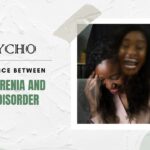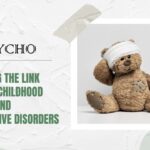Autistic Spectrum Disorder (ASD) and Social Anxiety Disorder (SAD) can impact social behavior. They differ in origin, symptoms, and treatment, yet they share some features and overlap.
Autism is a neurological condition that usually appears in childhood. It exhibits several symptoms, including social communication issues and repeated behaviors or hobbies. Nonverbal signals, eye contact, and reciprocal dialogues may be difficult for ASD patients. They also have repeated actions and routines. It is hypothesized that genetic and environmental factors create lifelong ASD.
Social phobia, or SAD, is an anxiety disorder that develops in adolescence or early adulthood. Social anxiety and a fear of being judged or criticized are the main symptoms of this illness. People with SAD may avoid socializing, public speaking, and being the center of attention. Social anxiety in ASD is caused differently than in SAD. ASD causes social issues due to a lack of social cues and standards, whereas SAD causes dread of unfavorable assessment.
Treatment for these illnesses is another major difference. ASD patients benefit from speech, occupational, and behavioral therapies that improve social communication skills. These treatments try to improve their social skills. CBT helps people question and reframe their anxious thoughts and progressively face fearful social situations through exposure treatment for SAD. SAD sufferers may get antidepressants or anti-anxiety drugs.
While ASD and SAD both affect social relationships, they are separate illnesses with different causes and treatments. ASD is a neurodevelopmental illness that causes lifelong social communication problems and repeated behaviors, whereas SAD is an anxiety disorder that causes overwhelming fear of social rejection. Diagnoses and therapy for these illnesses depend on recognizing these distinctions.
|
S.No. |
Aspects |
Autism Spectrum Disorder (ASD) |
Social Anxiety Disorder (SAD) |
|
1 |
Definition |
Neurodevelopmental disorder |
Anxiety disorder |
|
2 |
Onset |
Typically noticed in early childhood |
Usually emerges in adolescence or early adulthood |
|
3 |
Core Symptoms |
Impaired social interaction, communication, and repetitive behaviors |
Excessive fear of social scrutiny and avoidance of social situations |
|
4 |
Communication Difficulties |
Common, including speech delay |
Typically, no speech delay |
|
5 |
Repetitive Behaviors |
Evident, such as repetitive movements or fixations |
Not associated with repetitive behaviors |
|
6 |
Cognitive Abilities |
Vary widely, from intellectual disability to giftedness |
Typically normal cognitive abilities |
|
7 |
Sensory Sensitivities |
Common, heightened or diminished sensory perception |
Not a core feature, though some anxiety-related sensitivity may occur |
|
8 |
Social Interaction |
Difficulty in understanding social cues and relationships |
Fear of negative evaluation by others |
|
9 |
Eye Contact |
May avoid eye contact |
Usually maintains eye contact |
|
10 |
Nonverbal Communication |
Limited or unusual nonverbal cues |
May display nervous nonverbal cues |
|
11 |
Diagnostic Criteria |
Based on behavioral and developmental criteria |
Based on anxiety-related symptoms |
|
12 |
Prevalence |
Approximately 1 in 54 children in the US |
Affects around 7% of the US population |
|
13 |
Gender Differences |
More prevalent in males |
Slightly higher prevalence in females |
|
14 |
Etiology |
Genetic and environmental factors |
Predominantly environmental factors |
|
15 |
Treatment |
Behavioral therapy, speech therapy, and sometimes medication |
Cognitive-behavioral therapy and medication |
|
16 |
Social Motivation |
May have reduced social motivation |
Motivated to engage socially but inhibited by anxiety |
|
17 |
Empathy |
May have difficulty with empathy |
Typically capable of empathy |
|
18 |
Peer Relationships |
Difficulty in forming peer relationships |
Difficulty in maintaining peer relationships |
|
19 |
Restricted Interests |
Obsession with specific topics or objects |
No specific restricted interests |
|
20 |
Ritualistic Behavior |
Engages in repetitive routines or rituals |
No ritualistic behavior |
|
21 |
Language Development |
Speech development varies widely |
Normal language development |
|
22 |
Social Skills Training |
Often a focus of therapeutic interventions |
May benefit from social skills training |
|
23 |
Awareness of Disorder |
May lack awareness of social difficulties |
Generally aware of their anxiety |
|
24 |
Eye-Tracking Patterns |
Atypical gaze patterns in social situations |
No specific eye-tracking patterns |
|
25 |
Theory of Mind |
May have difficulty with understanding others’ perspectives |
Generally able to understand others’ perspectives |
|
26 |
Emotional Regulation |
May struggle with emotional regulation |
Emotional regulation difficulties are a hallmark |
|
27 |
School Performance |
May excel academically but struggle socially |
Academic performance may suffer due to anxiety |
|
28 |
Social Initiations |
Less likely to initiate social interactions |
May initiate social interactions but with anxiety |
|
29 |
Sensitivity to Routine |
Strong preference for routines |
Routines may be disrupted by avoidance |
|
30 |
Social Isolation |
Often experiences social isolation |
Isolation is a result of anxiety-driven avoidance |
|
31 |
Peer Bullying |
May be vulnerable to bullying |
May experience bullying but not necessarily due to social behavior |
|
32 |
Speech Patterns |
Speech may be monotone or lack inflection |
No specific speech patterns |
|
33 |
Intellectual Interests |
Obsession with specific intellectual topics |
No specific intellectual obsessions |
|
34 |
Social Support |
May require more structured support |
May benefit from social support to manage anxiety |
|
35 |
Prognosis |
Lifelong condition with varying outcomes |
Can improve with therapy and often less persistent |
Frequently Asked Questions (FAQs)
Q1: How can I tell if someone I know has ASD or SAD?
The two diseases share social issues, making differentiation difficult. However, causes distinguish them. ASD sufferers have trouble interpreting social cues and conventions, making social communication challenging. They may repeat behaviors. SAD patients may avoid social encounters because they fear negative appraisal. The right diagnosis and assessment require a medical professional.
Q2: Can someone with ASD also have SAD?
A person can have ASD and SAD concurrently. ASD’s social problems may cause social anxiety in such scenarios. To offer thorough therapy and support, mental health professionals must examine and treat these illnesses individually.
Q3: Are ASD and SAD treatments similar?
Therapeutic techniques may overlap despite different treatment aims. ASD and SAD may benefit from individual therapy. ASD patients with secondary social anxiety may get cognitive-behavioral therapy for SAD. The major therapy emphasis for each illness remains different.
Q4: What early symptoms might assist parents to distinguish ASD from SAD in their child?
Speech and language impairments, restricted eye contact, and social play difficulties are early symptoms of ASD. Hand-flapping and great enthusiasm for some topics may also be visible. In contrast, SAD youngsters may be shy, fear social settings, or shun group activities. If parents are worried about their kid’s behavior, they should see a pediatrician or child psychologist.
Q5: Does therapy or age help ASD or SAD?
Both illnesses progress differently in people. Early intervention and specialized therapy can assist ASD patients in improving social skills and adaptability. ASD is lifelong, but with help, people can progress. Therapy and medicine help control SAD, though. Both illnesses benefit from early diagnosis and treatment.









